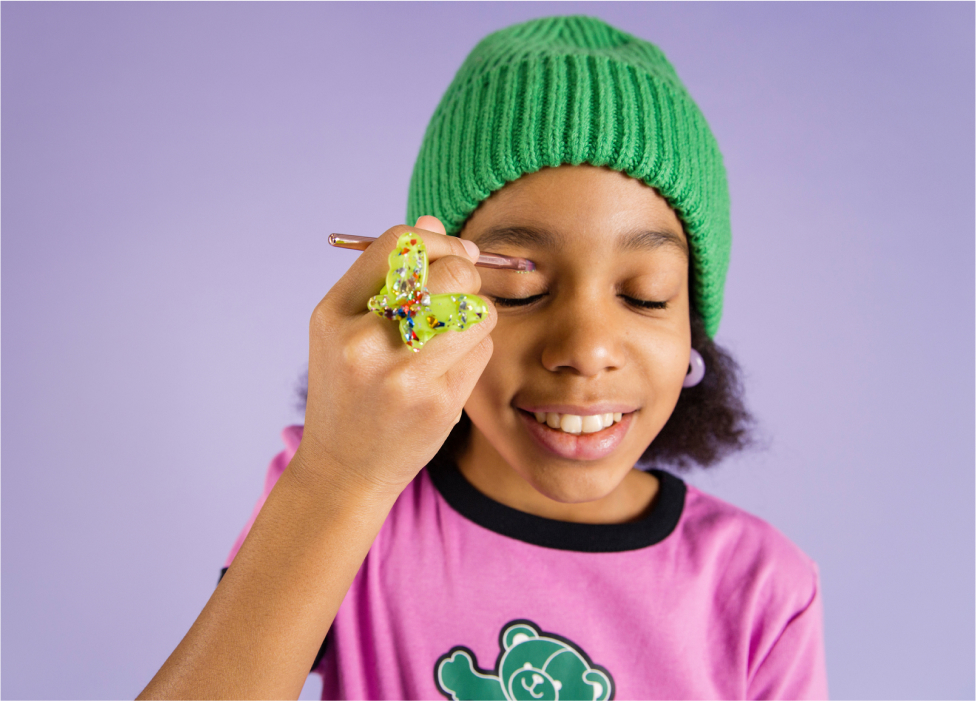
From “Sephora Kids” to Adult-ish: Understanding the Shifting Dynamics of Teendom
The research is clear: The timeline for teen development has expanded, breaking through the traditional boundaries of ages 13-19. Rather than emerging as fully-formed ‘Young Adults’ at age 20, the journey to adulthood now spans nearly two decades.
Marketers, get excited.
Parents, prepare yourselves.
There’s never been a better time for brands to engage with young people as they transition from childhood to adulthood. Here’s what it means today as their personal timelines and decision-making shifts.

‘Growing Up’ Today
In the not-too-distant past, the pivotal age when teens shifted to ‘grown-up’ brands was between 20 and 24 years old. As marketers, it made sense to focus on this time of transition in order to capture consumers as they leveled up and began to make their own purchasing decisions.
Now, this critical time is starting at least a decade earlier. The extended formative period of ‘growing up’ looks more like this:
- Preteens (8-12): Gen Alpha is ‘up-aging’ — engaging with mature content, technology and consumerism at an unprecedented young age.
- Teens (13-19): Gen Z is redefining what this traditional lifephase entails, moving from defiance and independence to protected exploration.
- Young Adults (20-28) are reaching traditional adult milestones significantly later than previous generations.

Shifting Behaviors & Mindsets of Today’s Teens
PRETEENS (8-12)
The Up-Agers of Gen Alpha
a.k.a. The New Darlings of Marketers
Preteens appear to have skipped right through childhood and emerged as an astoundingly mature and powerful generation given their chronological age. Their accelerated physical and social development has caused many researchers to dub them “Up-Agers” for their grown-up sensibilities. Yet, they are also showing signals of an extended stay in teendom:
“Gen Alpha is the most materially endowed generation ever, the most technologically savvy generation ever and they will enjoy a longer lifespan than any previous generation.
They will stay in education longer, start earning years later and stay at home with their parents later than even their predecessors…The role of parents therefore will span a longer age range—with many of these Gen Alphas likely to be still living at home into their late 20’s.”
McCrindle Research, Understanding Generation Alpha
Key factors contributing to their unique level of early maturity include:
- Earlier physical maturity, hitting puberty up to 2 years earlier than just decades ago Source
- Early adoption and innate proficiency with technology and social media
- Exposure to serious social and political issues at a much younger age
Takeaways for Marketers:
Ignore Preteens at Your Peril
You are dealing with a surprisingly mature and marketing-savvy audience. And they want nice things now. They are actively making purchase decisions and exerting extreme influence on family spending.
- Though they are seemingly savvy, they are still young. They are actively emulating older generations—their favorite brands are ‘adult’ brands. They’ve yet to fully develop their sense of selves.
- Respect their desire for sophistication, but remember it’s your responsibility to ensure the product is age-appropriate for developing body and minds—or prepare for the inevitable backlash (looking at you, skincare).
- They are making somewhat uninformed decisions, skimming labels and copy at best, and while they are familiar with category buzzwords, they may not understand the meaning.

TEENS (13-19)
The Openminded
Over & Under Protected Gen Z-ers
Teens aren’t in much of a hurry to grow up. Behaviors and milestones traditionally associated with the teen years, like rebelling against authority, indulging in risky behaviors and launching into an independent life, are more muted among this generation.
While today’s teens are defined by fostering openness, advocating for policies and practices that promote inclusivity and challenging systemic inequalities (climate change, human rights and global conflicts), they are also more hesitant to engage in the real world to take on challenges head-on. As they grow up, achieving independence can feel overwhelming and elusive.
Key Factors Contributing to Teens’ Unique Outlook:
- 73% of young adults describe their relationship with their parents as “friendship,” a stark contrast to previous generations. Source
- Gen Z’ers drinking hit a record low of 59% Source, teen smoking and tobacco use has dropped to a 25 year low Source, and only 30% of high schoolers report having sex. Source
- Many of the positive attributes of teen years, like holding a part-time job and having a romantic relationship, continue to diminish, down 12% and 13% from the previous generation respectively. Source
The Impact of an Online Life
It’s well documented that social media creates environments ripe for comparison, leading to feelings of inadequacy and self-doubt that undermine confidence at a time of vulnerability.
“The two big mistakes we’ve made: overprotecting children in the real world (where they need to learn from vast amounts of direct experience) and underprotecting them online (where they are particularly vulnerable during puberty).”
The Anxious Generation: How the Great Rewiring of Childhood is Causing an Epidemic of Mental Illness
A Challenging Real World Environment
The prospect of staggering student debt, rising housing costs and general economic uncertainty all contribute to a slow and challenging transition to adulthood. The implications for their twenties include:
- Living at Home Longer: Nearly half of all young adults 18-29 are living with their parents. Source
- Financial Dependence: 46% of Gen Zers 18-27 rely on financial assistance from their parents and family, using the money to help pay for necessities like groceries and toiletries, rent and utilities, phone plans and health-related expenses. Source
- Parental Career Support: Reliance on parental support throughout the entire job search process, including 25% having a parent attend an interview, is becoming the norm. Source
Takeaways for Marketers:
Meet Teens Where They Are
Although their reality may be strikingly different from their parents’ teen experiences, remember you are dealing with teenagers. Teens are still teens—struggling with their identity, confidence and place in the world.
- Encourage the exploration but ditch the rebellion. This will always be a life stage about finding one’s own path and experimentation. Find ways to make their curiosity fun and positive, not defiant or isolating.
- At this incredibly vulnerable stage, help build confidence, acceptance, empowerment—and avoid unattainable ideals and social comparisons.
- Recognize that they are still co-decision makers with their parents, and this co-decision making will continue into their twenties. Parents will continue to be influenced by their teens as well.

Conclusion:
The Macro Shifts
- Previously 20-24 years was a pivotal age when teens shifted to ‘grown-up’ brands. Now, this critical time to acquire entry consumers is starting at least a decade earlier.
- Because young people are experiencing premium brands much earlier while still receiving financial support, they may not trade up as they grow up—rather trade down once they are financially independent.
- Today’s teens have an enormous impact on family spending and will continue to receive financial support for longer, creating an extended dynamic of co-decision making for purchase and life decisions.